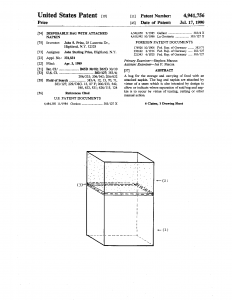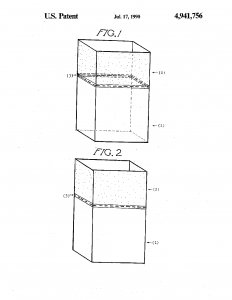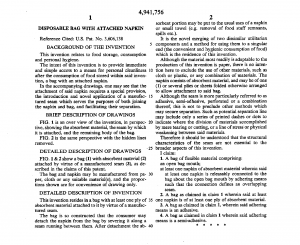3 The Patent Document
1. Who May Apply for a Patent[1]
According to the law, the inventor—or a person to whom the inventor has assigned or is under an obligation to assign the invention—may apply for a patent, with certain exceptions. If the inventor is deceased, the application may be made by their legal representatives (i.e., the administrator or executor of the estate). If the inventor is legally incapacitated, the application for patent may be made by a legal representative (e.g., guardian). If an inventor refuses to apply for a patent or cannot be found, a joint inventor may apply on behalf of the non-signing inventor.
If two or more persons make an invention jointly, they apply for a patent as joint inventors. A person who makes only a financial contribution is not a joint inventor and cannot be joined in the application as an inventor. It is possible to correct an innocent mistake in erroneously omitting an inventor or in erroneously naming a non-qualifying person as an inventor. Failing to list an inventor can potentially lead to patent invalidation.
Officers and employees of the United States Patent and Trademark Office are prohibited by law from applying for a patent or acquiring, directly or indirectly, except by inheritance or bequest, any patent or any right or interest in any patent.
2. The Specification[2]
A patent’s “specification” is all written text on a patent, other than information listed on the cover page.[3] A patent’s specification must include a written description of the invention and of the manner and process of making and using it. The specification is required to be in such full, clear, concise, and exact terms as to enable any person skilled in the technological area to which the invention pertains (or with which the invention is most nearly connected) to make and use the same.
The specification must set forth the precise invention for which a patent is requested, in such manner as to distinguish it from other inventions and from what is already known. It must describe completely a specific embodiment of the process, machine, manufacture, composition of matter, or improvement invented, and must explain the mode of operation or principle whenever applicable. The best mode (i.e., the best way to use the invention) contemplated by the inventor for carrying out the invention must be set forth.
In the case of an improvement invention (i.e., a new improvement on a known technology), the specification must particularly point out the part or parts of the process, machine, manufacture, or composition of matter to which the improvement relates. Furthermore, the description should be confined to the specific improvement and to such parts as necessarily cooperate with it or as may be necessary to gain a complete understanding of the invention.
The title of the invention, which should be as short and specific as possible (no more than 500 characters), should appear as a heading on the first page of the specification if it does not otherwise appear at the beginning of the application. A brief abstract of the technical disclosure in the specification, including that which is new in the art to which the invention pertains, must be set forth on a separate page, preferably following the claims. The abstract should be in the form of a single paragraph of 150 words or less, under the heading “Abstract of the Disclosure.”
A brief summary of the invention indicating its nature and substance, which may include a statement of the object of the invention, should precede the detailed description. The summary should be commensurate with the invention as claimed, and any object recited should be that of the invention as claimed.
When there are drawings, there shall be a brief description of the several views of the drawings, and the detailed description of the invention shall refer to the different views by specifying the numbers of the figures (e.g., Figure 1, Figure 2, etc.), and to the different parts by use of reference numerals (e.g., 1, 2, 3, etc.).
The specification must conclude with a claim or claims particularly pointing out and distinctly identifying the subject matter that the applicant regards as the invention. The portion of the application in which the applicant sets forth the claim or claims is an important part of the application, as these claims define the scope of the protection afforded by the patent and the manner in which questions of infringement will be judged by the courts.
More than one claim may be presented, provided they differ substantially from each other and are not unduly multiplied. These different claims describe different iterations of the invention. One or more claims may be presented in dependent form, referring back to and further limiting another claim or claims in the same application. Any dependent claim that refers back to more than one other claim is considered a “multiple dependent claim.”
As an example of dependent and independent claims, reference the sample patent in the following subsection. The claims are located at the end of the patent document (on the third page). Claim 1 is an independent claim, as it does not refer to any other claim. The fact that Claim 1 is independent is indicated by its introductory language, which does not refer to any other claim. Claims 2–4 are dependent claims, as they add limitations to the invention recited in Claim 1. These claims refer back to an earlier claim, such as Claim 2, which begins: “A bag as claimed in claim 1… .”
A multiple dependent claim refers back to more than one prior claim. It would use language such as this: “The invention claimed in claim 1 or 2, with the additional limitation… .” Multiple dependent claims shall refer to such other claims only in the alternative. A multiple dependent claim shall not serve as a basis for any other multiple dependent claim. Claims in dependent form shall be construed to include all of the limitations of the claim incorporated by reference into the dependent claim. A multiple dependent claim shall be construed to incorporate all the limitations of each of the particular claims in relation to that which it is being considered.
The claim or claims must conform to the invention as set forth in the remainder of the specification, and the terms and phrases used in the claims must find clear support or antecedent basis in the description so that the meaning of the terms may be ascertainable by reference to the description. A sample patent is presented in the following subsection.
3. Sample: U.S. Patent No. 4,941,756 (Disposable Bag with Attached Napkin)[4]



- Excerpt (with some edits) from General Information Concerning Patents, from the US Patent and Trademark Office, http://www.uspto.gov/sites/default/files/inventors/edu-inf/BasicPatentGuide.pdf. ↵
- Excerpt (with some edits) from General Information Concerning Patents, from the US Patent and Trademark Office, http://www.uspto.gov/sites/default/files/inventors/edu-inf/BasicPatentGuide.pdf ↵
- Note that some commenters include the claims in the specification and some don’t. ↵
- "Subject to [presently-inapplicable] limited exceptions reflected in 37 CFR 1.71(d) & (e) and 1.84(s), the text and drawings of a patent are typically not subject to copyright restrictions." See http://www.uspto.gov/terms-use-uspto-websites.html ↵

